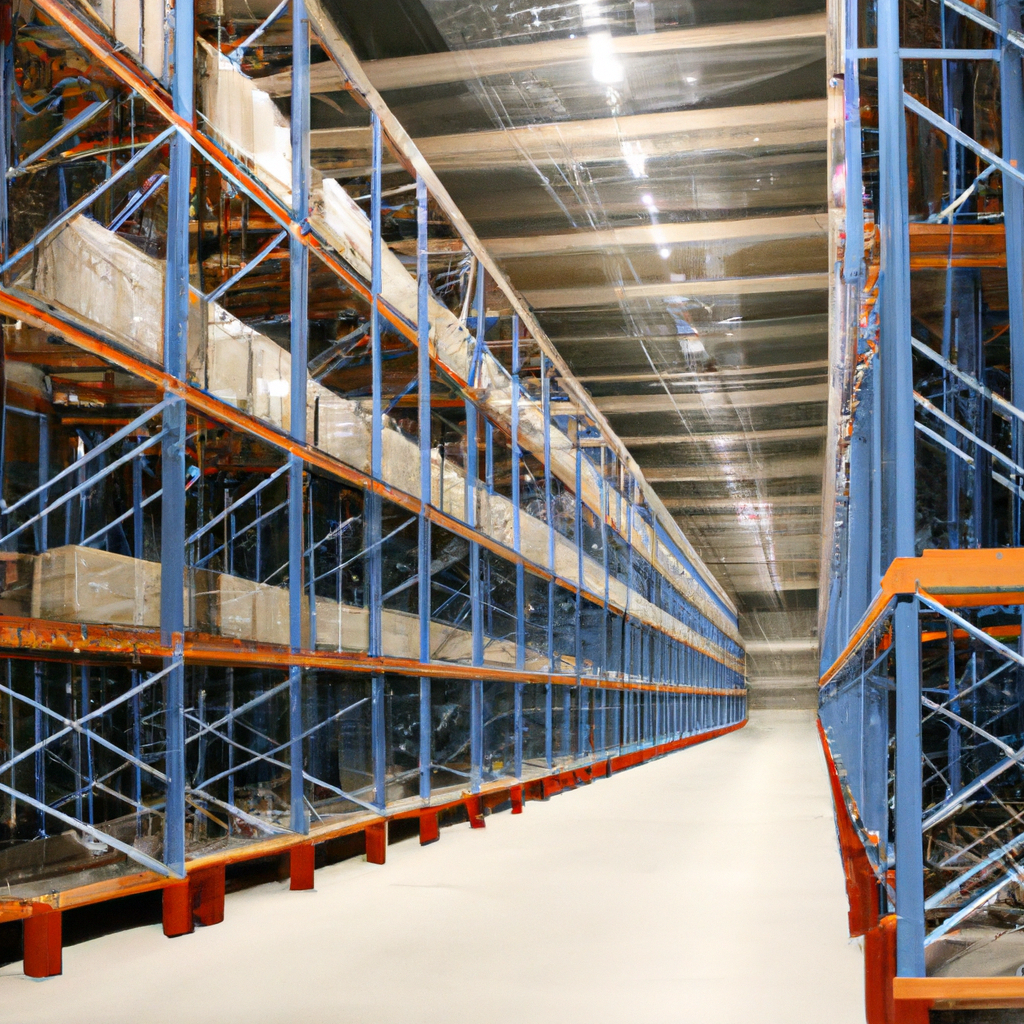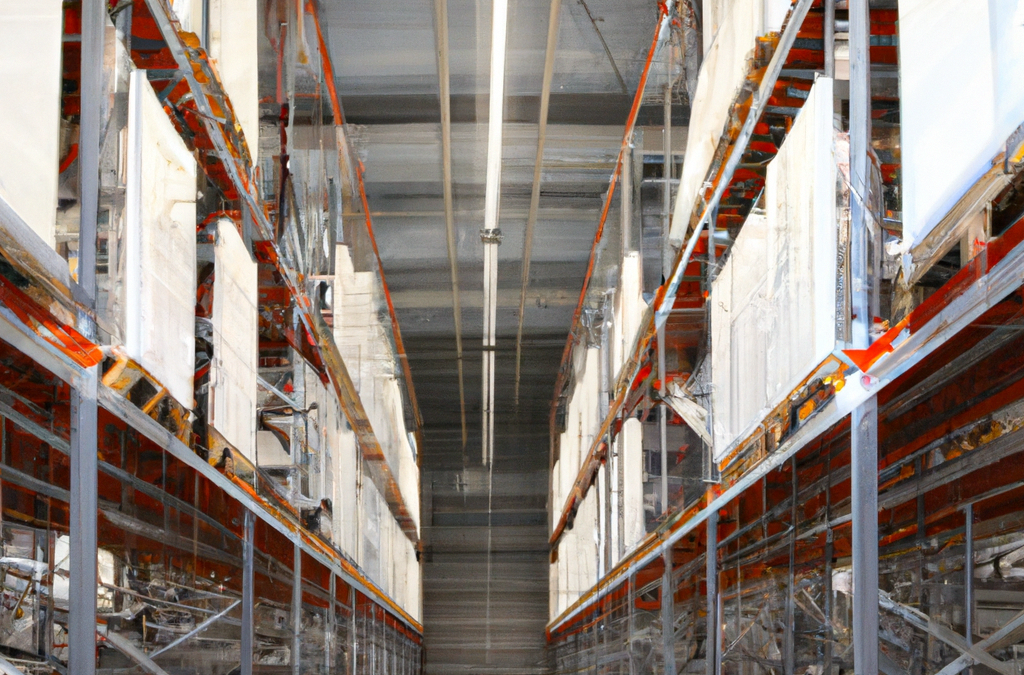Warehouse shelving systems play a crucial role in maximizing storage capacity and optimizing organization within a warehouse setting. In this article, we will explore the importance of warehouse shelving systems and the various types available. We will also delve into the factors to consider when choosing the right shelving system for your warehouse and the benefits they offer. Additionally, we will discuss the implementation and maintenance of these systems, highlight successful case studies, and touch upon future trends in warehouse shelving systems.
Importance of Warehouse Shelving Systems
Efficient storage and organization are vital for any warehouse operation. Warehouse shelving systems provide a structured approach to storing goods and materials, allowing for easy accessibility, efficient space utilization, and streamlined inventory management. With the increasing demands of modern logistics, businesses need effective shelving systems to meet storage requirements and ensure smooth operations.

Types of Warehouse Shelving Systems
Static Shelving Systems
Static shelving systems are commonly used for storing smaller items or products that don’t require frequent movement. They consist of fixed shelves that are sturdy and provide easy access to goods. These systems are versatile and can be adjusted to accommodate different storage needs.
Mobile Shelving Systems
Mobile shelving systems are designed to maximize storage capacity by eliminating unnecessary aisles. They use movable shelves that can be compacted together, creating additional space when not in use. This system is ideal for high-density storage areas and where space optimization is crucial.
Pallet Racking Systems
Pallet racking systems are specifically designed to store palletized goods. They provide easy access to stored items and maximize vertical space utilization. Common types of pallet racking systems include selective racks, drive-in racks, and push-back racks.
Cantilever Racking Systems
Cantilever racking systems are used for storing long and bulky items such as pipes, lumber, and steel bars. They feature arms extending from vertical columns, providing unobstructed access to the stored items. This system allows for efficient storage and retrieval of long goods.
Mezzanine Shelving Systems
Mezzanine shelving systems utilize vertical space by creating additional levels within a warehouse. These systems are particularly useful when floor space is limited. Mezzanines can be customized to accommodate various storage requirements, such as office spaces or additional storage areas.
Factors to Consider When Choosing Warehouse Shelving Systems
When selecting the appropriate warehouse shelving system, several factors need to be considered:
Storage Space Requirements
The amount of storage space required depends on the size and quantity of the items to be stored. Analyzing storage needs helps determine the type and configuration of the shelving system.
Load Capacity
Understanding the weight-bearing capacity of a shelving system is crucial to ensure safe storage. It is essential to consider both the static and dynamic load capacities of the system.
Accessibility
The ease of accessing stored items impacts operational efficiency. Choosing a shelving system that allows for quick and convenient access to goods enhances productivity and reduces handling time.
Flexibility
The ability to adapt and reconfigure the shelving system to accommodate changing storage needs is important. Flexibility allows for efficient space utilization and scalability as the business grows.
Cost
Budgetary considerations play a significant role in selecting the right shelving system. It is important to strike a balance between cost-effectiveness and the system’s ability to meet storage requirements.
Benefits of Using Warehouse Shelving Systems
Implementing warehouse shelving systems provides several benefits for businesses:
Maximizing Storage Capacity
Warehouse shelving systems enable businesses to utilize available space efficiently, maximizing storage capacity. By utilizing vertical space and optimizing layout configurations, warehouses can accommodate more goods within the same footprint.
Improved Organization
A well-designed shelving system enhances organization within the warehouse. It allows for categorization, labeling, and easy visual identification of stored items, reducing the time spent searching for specific goods.
Enhanced Efficiency
With a structured shelving system in place, employees can quickly locate and retrieve items, reducing picking and packing time. This streamlined process leads to increased productivity and faster order fulfillment.
Increased Safety
Warehouse shelving systems promote safety by providing secure storage for goods. Properly organized and secured items reduce the risk of accidents, such as items falling or workers tripping over cluttered areas.
Implementation and Maintenance of Warehouse Shelving Systems
Implementing and maintaining warehouse shelving systems require careful planning and regular upkeep:
Installation Process
The installation process involves assessing the warehouse layout, determining the optimal shelving system, and installing the necessary components. It is essential to follow manufacturer guidelines and ensure proper anchoring for stability and safety.
Regular Maintenance
To ensure the longevity and functionality of the shelving system, regular maintenance is crucial. This includes inspecting for damage, cleaning shelves, and addressing any repairs or adjustments needed promptly.
Future Trends in Warehouse Shelving Systems
As technology continues to advance, warehouse shelving systems are evolving to meet changing demands. Some future trends include:
- Automated and robotic systems for efficient storage and retrieval.
- Integration of smart sensors and RFID technology for real-time inventory tracking.
- Customizable and modular shelving systems to accommodate evolving storage needs.
- Sustainability-focused designs using eco-friendly materials and energy-efficient solutions.
Conclusion
Warehouse shelving systems are essential for maximizing storage capacity and optimizing organization in warehouses. By selecting the right shelving system based on storage requirements, load capacity, accessibility, flexibility, and cost considerations, businesses can reap the benefits of increased efficiency, improved organization, and enhanced safety. Regular maintenance and proper installation further ensure the longevity and functionality of these systems. As future trends emerge, warehouses can expect more advanced and sustainable shelving solutions to address their evolving needs.


Recent Comments